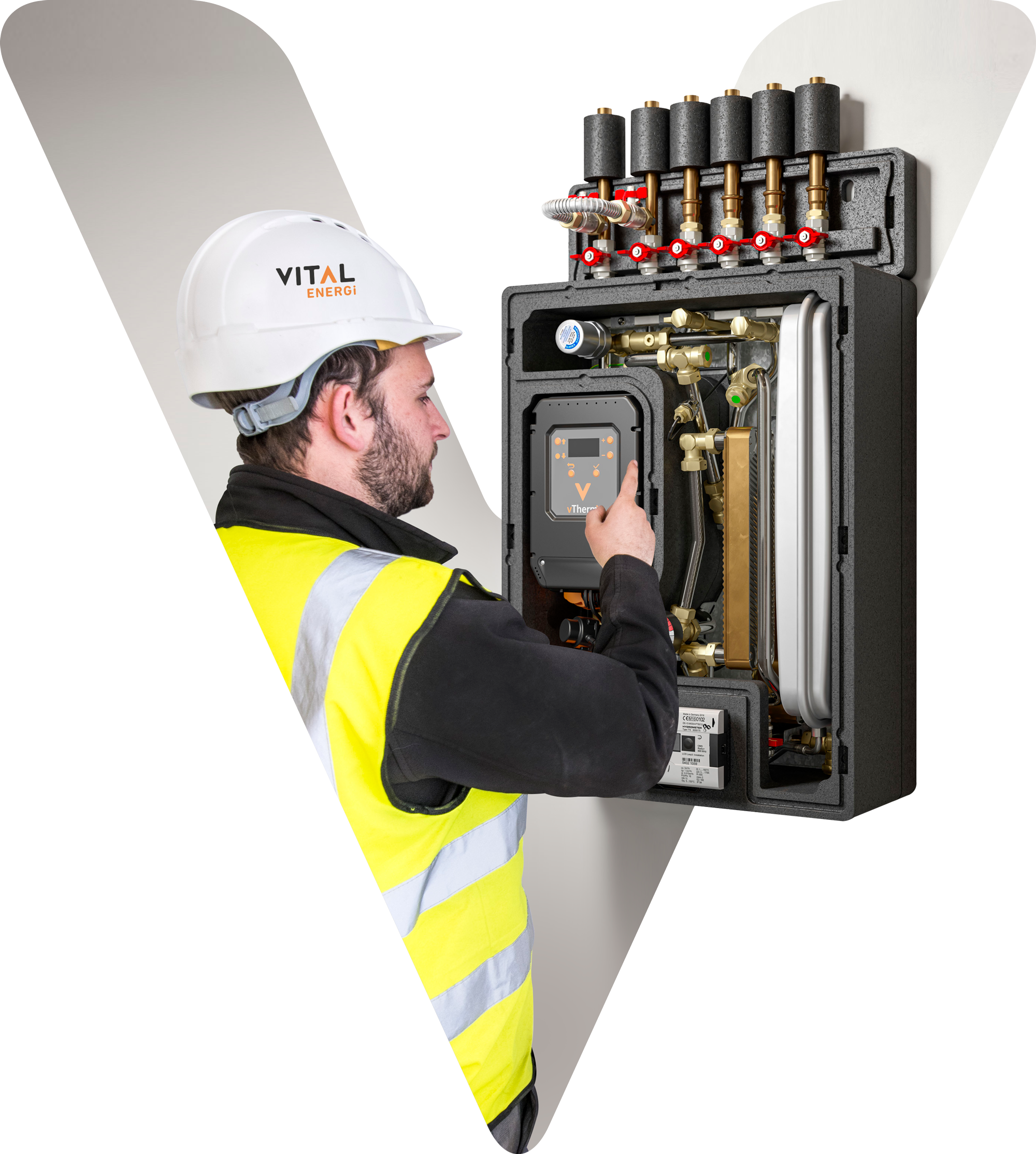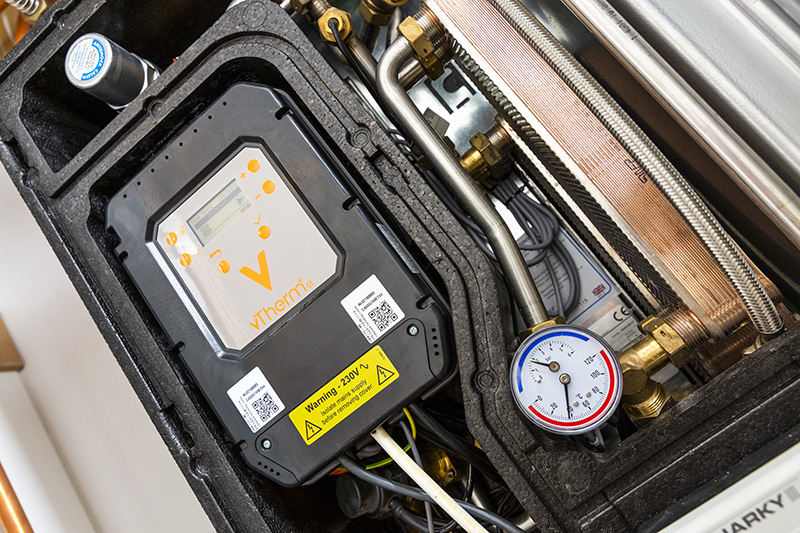As a member of BESA we are subject to regular third-party inspections and assessments, ensuring that our technical and commercial competencies continue to meet industry standards.
vTherm˚e tops list of best performing HIUs in BESA test.
Heat Interface Units (HIUs) are an essential part of a heat network and have a huge impact on how well the overall system performs. To meet the challenge of next-generation, lower temperature heat networks, we developed the vTherm˚e, which is installed within homes across the UK, including providing customers with reliable heating and hot water.
The vTherm˚e was recently tested under the new BESA test regime, the industry standard for performance and efficiency, where it achieved the lowest VWART (Volume Weighted Average Return Temperature) and highest Domestic Hot Water (DHW) output of any HIU.
Why does the 2023 BESA Test Regime and VWART matter?
The VWART (Volume Weighted Average Return Temperature) measures the average temperature of water returning from the heat interface unit to the heat network. A lower VWART, as demonstrated by the vTherm˚ e heat interface unit, means:

To summarise it means improved network efficiencies as the energy required to meet demand is lower, resulting in reduced costs to our customers.
OFGEM will be there to support the customers, and they will use the new Heat Network Technical Assurance Scheme (HNTAS) which is due for release. Therefore, it is Vital that the products used in our heat networks are tested to demonstrate high levels of performance to comply with regulation and meet our customers' requirements.
The 2023 BESA HIU test regime has evolved from the 2018 BESA test criteria, to drive efficiency within heat networks and heat interface units. The new regime emphasises performance at lower temperatures, includes testing at both 0.5 bar and 2 bar differential pressures and also has over forty pass and fail criteria compared to eight in the 2018 test. This gives a much more accurate reflection of how HIUs will perform on modern, lower temperature heat networks.


With Ofgem regulation of heat networks on the horizon, the Heat Network Technical Assurance Scheme (HNTAS) has introduced 26 KPIs to ensure heat networks meet minimum technical performance, reliability, and efficiency targets. By specifying a HIU like the vTherm˚e, with a lower vWART, the heat network operator is already on the way towards HNTAS compliance.
The vTherm°e HIU’s performance at low return temperatures enables a reduction in wasted energy and improvement in the overall network performance. This means that the vTherm˚e heat interface unit is the future-ready solution for both retrofit and next-generation heat networks.